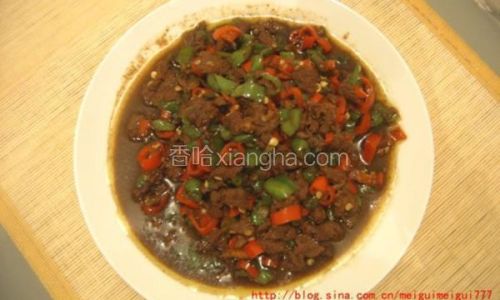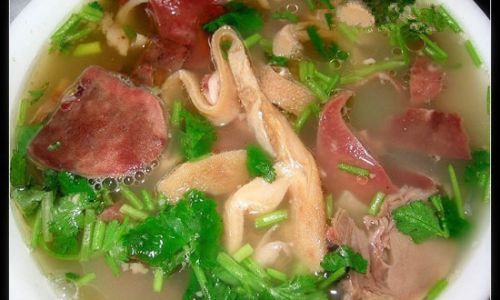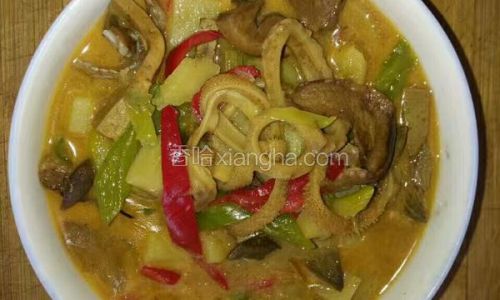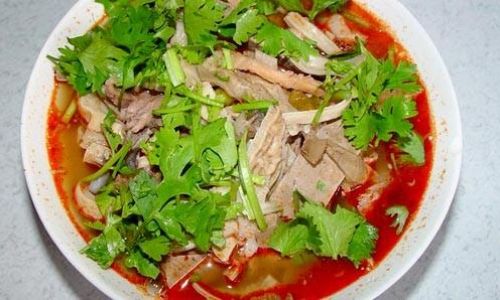Introduction
In the vast culinary landscape of China, regional cuisines have evolved over centuries, each boasting unique flavors and cooking techniques that reflect the local geography, climate, and cultural heritage. Among these, Shaanxi cuisine, particularly its famous noodles accompanied by a hearty mutton stew known as “yangrou saozi,” stands out for its rich, savory taste and comforting warmth. Yangrou saozi, often translated as mutton seasoning or mutton gravy, is a cornerstone dish in Shaanxi’s culinary heritage, enjoyed not only by locals but also by food enthusiasts worldwide. This article embarks on a culinary journey, exploring the intricate steps and secrets behind making an authentic yangrou saozi, delving into the choice of ingredients, cooking methods, and the cultural significance of this dish.
The Essence of Yangrou Saozi

Yangrou saozi is more than just a stew; it’s a flavorful symphony where the umami of mutton, the tanginess of vinegar, the subtle sweetness of onions, and the fiery heat of chili peppers harmonize to create a dish that is both comforting and exhilarating. The key to its success lies in the quality of the mutton, the balance of spices, and the slow-cooking process that allows all the flavors to meld together.
Choosing the Right Mutton
The first step in crafting a perfect yangrou saozi is selecting high-quality mutton. Ideally, use mutton from the hindquarters or shoulder, as these cuts are more flavorful and tender when cooked slowly. Look for meat with a bright red color, firm texture, and minimal fat. Fresh or frozen mutton can be used, but ensure it’s properly thawed if frozen to retain its juices and flavor.
Preparing the Ingredients
Once you have your mutton, the next step is to prepare the supporting cast of ingredients. Essential items include:

- Onions and Garlic: Finely chopped to build the base of the stew.
- Ginger: Sliced thinly to add a hint of warmth and freshness.
- Green Onions and Coriander: Chopped for garnish, adding a burst of color and freshness.
- Chili Peppers: Depending on your preference for spice, use fresh red chili peppers, dried chili flakes, or chili oil.
- Spices: A blend of Sichuan peppercorns, star anise, cinnamon, and cloves provides depth and complexity.
- Soy Sauce, Vinegar, and Sesame Oil: These condiments add layers of flavor, with soy sauce for saltiness, vinegar for tanginess, and sesame oil for richness.
- Vegetables: Carrots, potatoes, and celery can be added for added texture and nutrition, though they are optional.
- Stock or Broth: Chicken or beef stock enhances the flavor profile, but homemade mutton broth is ideal.
Cooking the Stew: A Step-by-Step Guide
-
Marinating the Mutton: Begin by cubing the mutton into bite-sized pieces. In a bowl, mix together soy sauce, a splash of vinegar, minced garlic, and sliced ginger. Add the mutton cubes, ensuring they are well-coated, and let them marinate for at least 30 minutes to an hour. This step helps to tenderize the meat and infuse it with initial flavors.
-
Sautéing the Aromatics: In a large, heavy-bottomed pot or wok, heat a generous amount of oil over medium-high heat. Add the finely chopped onions and sauté until they turn translucent and start to caramelize. Then, add the minced garlic and sliced ginger, stirring constantly to avoid burning. The aroma released at this stage is a promise of the deliciousness that awaits.
-
Adding the Spices: Once the aromatics are fragrant, add the spices – Sichuan peppercorns, star anise, cinnamon, and cloves. Toast them lightly, allowing their oils to release and deepen the flavor profile of the stew. Be careful not to overtoast, as this can make the spices bitter.
-
Cooking the Mutton: Now, add the marinated mutton cubes to the pot, stirring occasionally until they brown evenly on all sides. This locks in juices and adds a layer of caramelization that boosts the overall taste.

-
Adding Liquid and Simmering: Pour in enough stock or broth to cover the mutton by about an inch. Bring the mixture to a boil, then reduce the heat to low and let it simmer gently. This slow-cooking process, typically lasting 1.5 to 2 hours, allows the mutton to become tender and the flavors to meld together seamlessly.
-
Seasoning and Finishing: After the mutton is tender, taste the stew and adjust the seasoning with more soy sauce, vinegar, or salt as needed. If using vegetables, add them in the last 30 minutes of cooking to avoid overcooking and losing their texture. Finally, finish with a drizzle of sesame oil and a sprinkle of chopped green onions and coriander.
Serving Yangrou Saozi
Yangrou saozi is traditionally served over hand-pulled noodles or steamed buns, but it can also be enjoyed with rice or as a dipping sauce for dumplings. The stew’s rich, umami-laden gravy complements the simplicity of noodles or the softness of buns, creating a harmonious meal that satisfies both the palate and the soul.
Cultural Significance

Beyond its culinary appeal, yangrou saozi holds cultural significance in Shaanxi and beyond. It is often associated with festivals, family gatherings, and special occasions, symbolizing abundance, warmth, and unity. The slow-cooking process reflects the patience and care that goes into preparing a meal for loved ones, a tradition that has been passed down through generations.
Conclusion
Mastering the art of making yangrou saozi is not just about following a recipe; it’s about understanding the balance of flavors, respecting the ingredients, and embracing the cultural heritage that underpins this dish. With each spoonful, you take a journey through Shaanxi’s culinary landscape, experiencing the rich tapestry of flavors that have stood the test of time. So, the next time you’re in the kitchen, why not embark on this culinary adventure and create your own version of yangrou saozi? It’s a dish that promises not only to delight your taste buds but also to warm your heart and soul.





0 comments